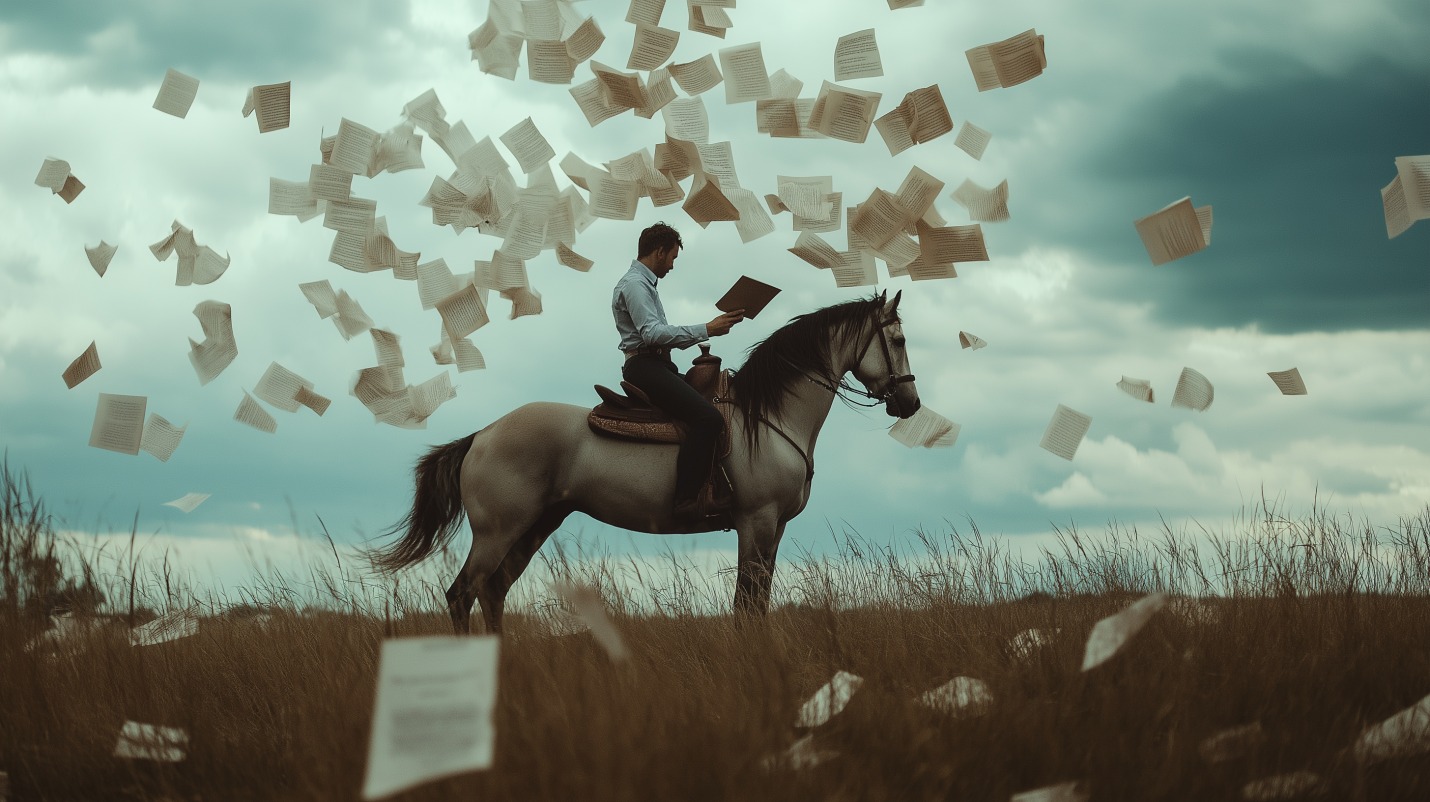Some say a picture is worth a thousand words. Others insist that a good landing page needs a thousand words.
The truth? You need both. It’s not a battle between visuals and text—it’s a team effort.
Separating them is like taking gravy away from mashed potatoes. Sure, they’re fine on their own, but together? Magic.
Strong copy tells your story. Photos make people care about it. Combine them, and suddenly your content not only reads better—it performs better.
Photos Make Your Words Stronger
Strong writing can do a lot. It can educate, persuade, and entertain. But attention spans begin to fade when text stretches into hundreds or thousands of words. Even the most well-crafted copy benefits from visual breaks that reset the reader’s focus and emphasize key ideas.
Images step in as powerful tools to enhance what’s written. They bring clarity to complicated topics and offer readers a much-needed pause without interrupting the flow. An infographic can distill several paragraphs into a glance.
Visuals don’t exist to decorate. They carry meaning. They help communicate nuance without length. Placing a thoughtful image next to an important idea can make that idea stick.
Readers process visuals faster than text, so strategically using them to introduce or summarize concepts creates a more efficient reading experience.
A long article without images risks becoming a chore. Add in relevant visuals, and the same article transforms into something digestible, clear, and more inviting to engage with. When readers aren’t overwhelmed, they stay longer, absorb more, and respond better to calls to action.

- Simplify difficult concepts quickly
- Add emotional weight that reinforces tone
- Provide visual rest in long-form content
- Strengthen SEO by improving structure and usability
Images Improve Structure
Reading a lengthy blog post packed with 1,200 uninterrupted words can feel like trudging through mud. It’s visually overwhelming, mentally exhausting, and easy to abandon halfway through.
Now imagine the same content sprinkled with relevant, well-timed images—each one helping emphasize a point or offering a visual breather. The difference in experience is night and day.
Images serve as visual anchors. They break large text blocks into manageable segments, making it easier for readers to pace themselves. Strategic placement of photos gives rhythm to the reading flow—almost like turning prose into a structured conversation. Instead of scanning for meaning, readers are guided through it.
Photos don’t just make content prettier—they carry meaning. A visual placed between paragraphs can offer clarification, reinforce an idea, or simply keep attention steady.
When a person scrolls through a page, well-placed visuals create a kind of internal map. That sense of movement and order helps keep interest alive.
Skimmability also improves. Readers in a hurry rely on visual cues to identify key sections. Images work in tandem with subheadings and pull quotes to guide scanning behavior. When the brain sees that effort was made to organize the content visually, it repays that effort by staying longer.
- Keeps users engaged with visual rhythm
- Prevents mental fatigue during long reads
- Enhances clarity and boosts retention of ideas
- Guides readers naturally toward important takeaways
Want More Interaction? Use a Photo

Let’s be honest—nobody’s excited to scroll through a massive block of text. If your content looks like a textbook, it gets treated like one: skimmed, skipped, or abandoned altogether. Long paragraphs with zero visual breaks push readers away before they ever get to your message.
A well-placed image instantly shifts attention. It breaks the monotony, resets the eye, and invites users to engage.
A compelling photo can stop fast-scrolling user in their tracks, especially on social media platforms where attention spans shrink by the second. Scroll-stopping power matters, and visuals bring it in spades.
An image placed strategically near your CTA doesn’t just look nice—it strengthens the message. Pairing a photo with your headline or call to action increases the odds that someone will interact with it.
Clicks, likes, shares, and comments don’t come just because the words are well-written—they happen because the whole presentation feels dynamic.
Images also create emotional momentum. A photo can build trust, make a product more desirable, or add humor and relatability. It takes a static experience and turns it into something people want to share. That’s especially valuable when trying to extend reach and generate organic traffic.
Check out high-performing LinkedIn or Instagram posts. Posts with engaging images, infographics, or even playful memes typically outperform those that rely on text alone. Engagement isn’t accidental—it’s crafted.
- Catch the eye in busy feeds
- Add context to your message
- Encourage social sharing
- Support CTAs with visual cues
- Improve post recall and emotional connection
- Make content easier to scan and process
Better Images = More Time on Site
Search engines pay close attention to how users behave on your page. If someone clicks in and immediately backs out, that sends a loud signal: the content didn’t hold their attention. Fast exits lead to lower rankings. But when visuals guide the eye, clarify the message, and make reading enjoyable, visitors stay longer. That extra time? It’s gold for SEO.
A real-world example proves the point—simply replacing unrelated images with relevant ones led to a nearly 50% increase in average time spent on the page. That’s not a minor lift.
When images are chosen with intent and placed to support the flow of reading, the result is smoother navigation, more engagement, and greater retention.
Visuals slow down the scroll. When done right, they give the brain a pause, making complex topics feel manageable and heavy text less intimidating. They also encourage visitors to keep reading rather than skim or abandon.
Investing in thoughtful visuals creates an environment where readers feel welcome. They don’t just consume—they absorb. That changes how your site performs.

- Signals value to search engines
- Reduces bounce rates
- Increases reader trust
- Improves SEO performance
Don’t Treat Images Like Accessories

Grabbing the first photo available and dropping it onto a blog post doesn’t add value. In some cases, it actively harms it.
If an image sends mixed signals, looks off-brand, or feels disconnected, it introduces friction—and friction makes people leave.
Visuals shouldn’t be fillers. They’re not fluff. They should carry weight. Good images reinforce what the text is doing. Great ones elevate it. Just like a headline grabs attention, a strong visual can reinforce the message instantly.
Think of each image as part of the message, not a decorative addition. If it doesn’t serve a purpose—cut it. If it confuses—replace it.
Every photo, chart, or graphic should be doing one of the following: explaining a point, illustrating a benefit, or guiding the reader’s next step.
- Always match tone and message
- Use original or customized images when possible
- Avoid cliché or overly generic stock photos
- Think of each image as a “mini headline”
Images deserve just as much attention as your words. They don’t play backup—they’re part of the performance.
Summary
Copywriting and photos aren’t competing for attention—they’re working together to make your message shine. When used thoughtfully, they create a balanced, effective experience that boosts SEO, improves readability, and drives interaction.
So stop thinking of them as separate tools. Think of them as a dynamic duo that, when paired properly, can turn any piece of content into something compelling, shareable, and effective.
2+2 doesn’t equal 4 anymore—it equals 5 when copy and images combine.

